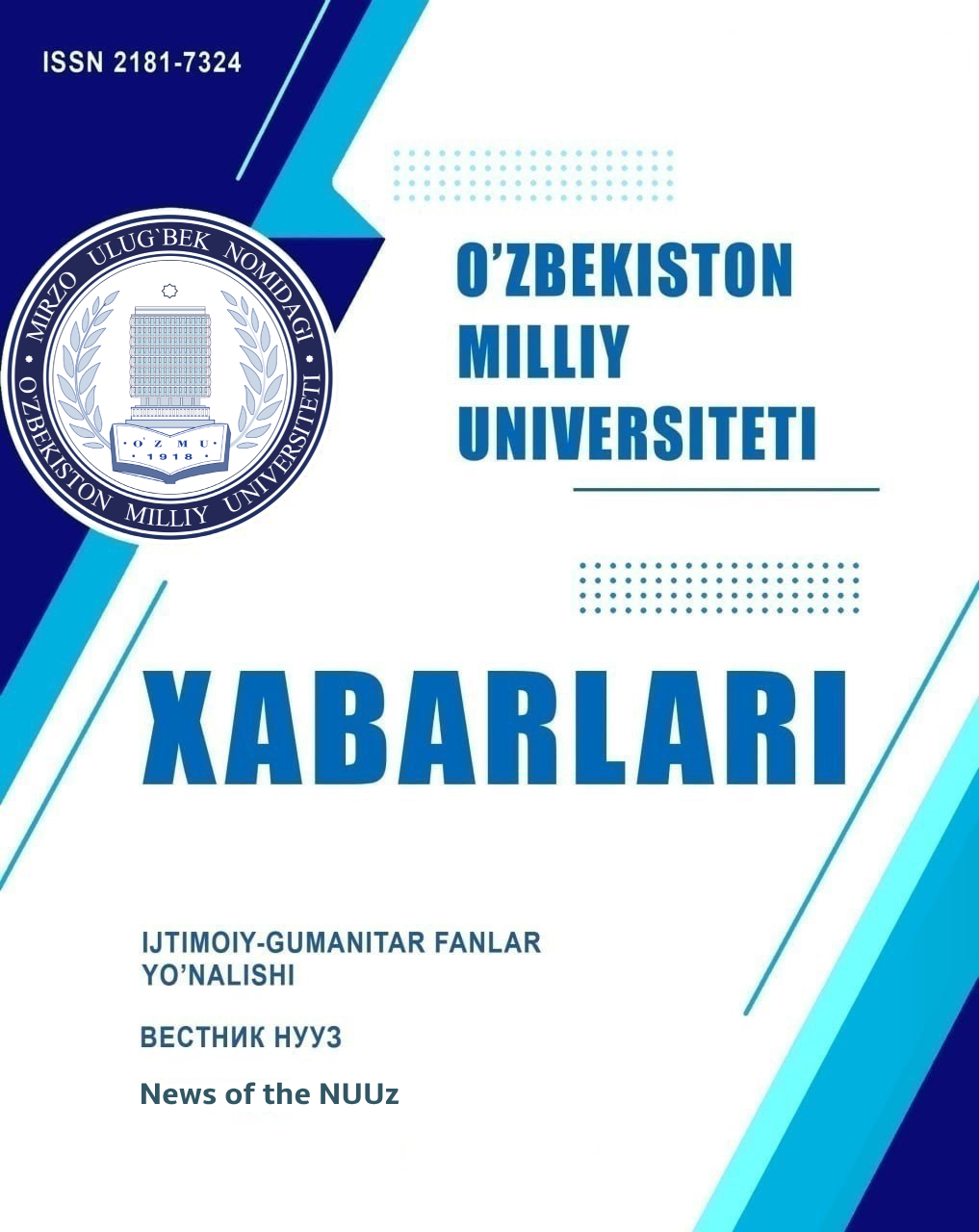TYPES OF NEOLOGISMS AND FACTORS OF FORMATION
DOI:
https://doi.org/10.69617/uzmu.v1i1.2.1.1249Keywords:
neologism, semantics, phrase, language, culture, term, neology.Abstract
In this article, using the example of the Uzbek language, the types and factors of the formation of neologisms that arose for various reasons are analyzed. The Russian and English borrowings that became part of the Uzbek language concerned new words that arose as a result of phonetic or formally modified use of words. The main factors contributing to the emergence of neologisms are also described in detail.
References
1. https://www.merriam-webster.com/wordplay/mansplaining-definition-history
2. Saidov Y. Oʻzbek adabiy tili tarixi : oʻquv qo’llanma. - Buxoro : “Sadriddin Salim Buxoriy” Durdona nashriyoti, 2019. - 168 b.
3. Попова И. С. “Прямая речь и цитирование как способы передачи чужого слова в устнопорождаемой речи” Вестник Иркутского государственного лингвистического университета, no. 3 (7), 2009, pp. 65-69.
4. Попова И. С. “К вопросу использования чужих слов в устно-порождаемой речи” Язык и культура, no. 2 (34), 2016, pp. 77-84.
2. Saidov Y. Oʻzbek adabiy tili tarixi : oʻquv qo’llanma. - Buxoro : “Sadriddin Salim Buxoriy” Durdona nashriyoti, 2019. - 168 b.
3. Попова И. С. “Прямая речь и цитирование как способы передачи чужого слова в устнопорождаемой речи” Вестник Иркутского государственного лингвистического университета, no. 3 (7), 2009, pp. 65-69.
4. Попова И. С. “К вопросу использования чужих слов в устно-порождаемой речи” Язык и культура, no. 2 (34), 2016, pp. 77-84.
Published
2024-02-28
How to Cite
Moxigul NASIROVA. (2024). TYPES OF NEOLOGISMS AND FACTORS OF FORMATION. News of the NUUz, 1(1.2.1), 309–312. https://doi.org/10.69617/uzmu.v1i1.2.1.1249
Issue
Section
Articles




.jpg)

1.png)


